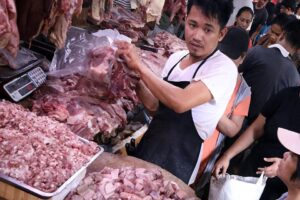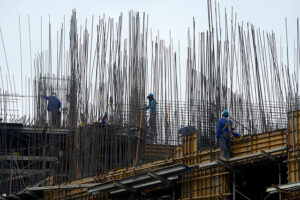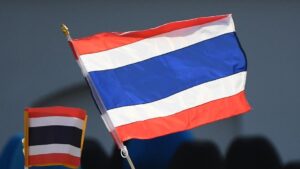Menu
Evolving Lockdowns: The Latest Iteration of the ECQ

This marks the third ECQ in the country with the previous ones being realized in March 2020 and March 2021. The transition to the ECQ commenced on August 6 and is set to persist until August 20.
Prior to this, a general community quarantine (GCQ) and GCQ with heightened restrictions were first implemented. President Rodrigo Duterte had earlier hinted at putting the capital under a hard lockdown during his final State of the Nation Address when COVID-19 cases were once again beginning to surge.
An ECQ, although extremely taxing on the country’s economy, is a necessary measure to keep the deadliest iteration of the virus from getting out of hand. COVID-19 National Task Force Chief Implementer Carlito Galvez Jr. noted that without it, the country could suffer similar fates as India, Indonesia, and Vietnam where pandemic-related cases and deaths have reached alarming rates.
“Ang nakita natin dito is, if we will not declare ECQ sa NCR, we will be the next India,” (“What we see is, if we will not declare ECQ in NCR, we will be the next India,”) explained Galvez to the House of Representatives Committee on Health.
Socioeconomic Planning Secretary Karl Chua had already projected that the country could lose as much as ₱105 billion per week during the two-week ECQ. Additionally, poverty could increase by 177,000 as well as unemployment by 444,000, weekly.
Despite these figures, countless business leaders heeded the government’s plans for another hard lockdown stating that August would be the most opportune time to carry it out since it’s considered a “ghost month.” It would also be in the interest of safeguarding the fourth quarter when economic activity peaks.
As the coronavirus continues to evolve and wreak more havoc, the country’s various lockdown classifications have likewise followed suit. Granted, this third ECQ is unlike its predecessors. So what exactly sets it apart? The degree of two things: mobility and assistance.
Mobility
In terms of mobility, a fairly new term had sprung up over the past week to identify the people who are been allowed by the COVID-19 Inter-agency Task Force (IATF) to leave their homes under the current ECQ. Only authorized persons outside residences (APORs) are permitted to travel throughout the two-week lockdown.
In previous iterations of the ECQ, people would only hear the phrases “essential workers” and “essential travel” to categorize who and what activities were allowed to be carried out. The IATF’s list of APORs is fairly extensive with at least 41 different groups and personalities. Among these are as follows:
- working APORs, who are reporting physically to their workplace and considered as essential workers;
- consumer APORs, or those who need to buy goods;
- and other APORs, such as those who have other essential reasons for going out, such as for their medical needs.
There was also a minor dispute with regards to non-APOR drivers whose only intentions were to drop off and fetch working APORs. PGen Guillermo Eleazar, chief of the Philippine National Police, first announced that these drivers would not be allowed to pass police checkpoints, which caused certain complications among the public. He rescinded his announcement just a day after, immediately settling any confusion regarding the ECQ’s rules on mobility.
Public transportation, on the other hand, will still be made available throughout the ECQ period, but only for the aforementioned APORs. However, public utility vehicles should not exceed 50% of their capacity when traveling.
As for inter-city travel, the PNP said that guidelines are yet to be drafted but it will very much be prohibited, particularly for consumer APORs. What adds another layer of complexity is that these restrictions won’t be uniform in every city caught under the hard lockdown. For the most part, there will be certain differences between local government units (LGUs).
Assistance
As for the assistance to be given to different groups, especially the “ayuda” or financial aid, the government scrambled to prepare the funds they would be distributing to ECQ-stricken communities. It was earlier mentioned that they were unsure of where to source the finances needed to extend this support.
The first two ECQs had the Bayanihan funds to draw from, which had sufficient cash allocations for those who needed it the most. Fortunately, during a recent press briefing, Presidential spokesperson Harry Roque assured that the budget will be coming from the “savings” of various government agencies.
This most recent round of “ayuda” is expected to reach a total amount of ₱13.1 billion, which will be disbursed to 10.7 million qualified residents within the areas under ECQ. However, the list of beneficiaries is still to be finalized according to Metropolitan Manila Development Authority (MMDA) chair Benhur Abalos since the government won’t be utilizing the previously identified recipients.
Nonetheless, those who will fall under the list of qualified personalities will receive ₱1,000. Additionally, each family may not exceed ₱4,000 cash aid. This is pretty much similar to the lockdowns implemented in the past. It’s still unclear though, whether this aid will be re-implemented should the ECQ exceed its two-week timeline.
With the coming and going of varying degrees of lockdowns over the past year, it can be quite difficult to track what each level entails. Not to mention the fact that certain protocols change with every iteration that’s implemented. It may all just look like a bunch of letters thrown together, but these are established to help the country slowly inch its way out of the clutches of the global pandemic.
References: Rappler, PhilStar, CNN PH, Tatler Asia, Manila Bulletin
#Top Tags COVID Covid-19 Technology Finance Investing Sustainability Economy

Subscribe to Our Newsletter and get a free pdf:



















Comments are closed for this article!